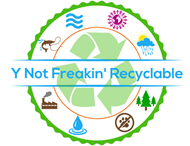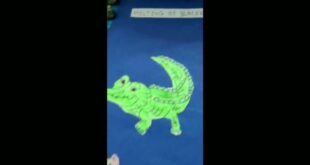[ad_1]

Fieldnotes is WWF-Canada’s newsletter about our science-based work finding solutions in the face of an unprecedented crisis in climate change and wildlife loss. Please click here to subscribe and get future issues emailed direct to your inbox.

A lone Grizzly bear (Ursus arctos horribilis) dwarfed by surrounding trees and mountains at Khutze Estuary, Great Bear Rainforest, British Columbia, Canada. Andrew S. Wright/WWF-Canada
UN climate summit arrives amid alarming new science
Urgency over the climate crisis may be increasing, but none of this knowledge is new. Scientists have been studying the impact of carbon emissions on climate since the 19th century. Thomas Edison was urging a transition from fossil fuels to renewables in 1931. The term “global warming” was first coined in 1975. And CBC aired The greenhouse effect and planet Earth in 1984, a documentary that “looks at the global rise in carbon dioxide levels and asks scientists how the world’s climate might react.”
Now we’re approaching the 2019 UN Climate Change Conference, also known as COP 25 because it’s the 25th annual “conference of parties.” It’s taking place from Dec. 2 to 13 in Madrid, Spain after civil unrest forced a last-minute move from Santiago, Chile. (Chile, however, remains the official summit host and there will still be a strong focus on ocean action.)
On the climate summit’s silver anniversary, the most important thing is ambition. Canada, like everywhere else, is missing its promised Paris Agreement emission target and threatening the future for wildlife and people.
This is despite so much disturbing new science from the Intergovernmental Panel on Climate Change over the past year or so — the catastrophic global warming report that sparked many “1.5°C to stay alive” strike chants and similarly staggering studies on the need for a radical transformation of land use and the existential threat of melting ice and rising seas.
Then there’s the unprecedented UN biodiversity report warning “around one million animal and plant species are now threatened with extinction, many within decades, more than ever before in human history.” While habitat loss is the primary driver, the climate crisis is an ever-increasing threat to species worldwide.
Further amplifying this clear and present danger, the UN’s annual Emissions Gap report came out this week. It warns the world is now on track for a 3.2°C temperature rise, and global greenhouse gas emissions must fall 7.6 per cent every year for the next decade to meet the 1.5°C Paris Agreement. That means current targets — yes, the ones almost every country is already failing to meet — will have to increase five fold to avoid climate catastrophe.
So, the WWF network will be sending representatives to COP25 to push for nature-based climate solutions. We will be advocating for the importance and benefits of protecting and restoring terrestrial and marine ecosystems — including halting biodiversity loss, building resilience and storing carbon. And we will be explaining the need to design these nature-based solutions with Indigenous and other local communities from the start.
We’ve known about climate change for a long time, and nature can help us mitigate and adapt to this crisis, but there’s simply no more time to waste.
Global Strike 4 Climate on November 29
The COP 25 move to Spain also forced Swedish climate-strike icon Greta Thunberg to find a new zero-emission sailboat ride back to Europe to attend the summit and lead a fourth Global Climate Strike on November 29.
Of course, while crossing North America in the Tesla vehicle that Arnold Schwarzenegger gave her, Greta’s been leading local strikes in cities like Edmonton, Vancouver and L.A. But this will be the first international climate strike since 7.6 million people took to the streets on September 27 demanding action.
As well as demonstrating the power of sustained grassroots protests prior to the UN climate summit, this strike is also taking place on Black Friday. Under the theme “our futures are not for sale,” they will raise awareness about the environmental impact of rampant consumerism and include activities like workshops and clothing drives and swaps.
To find out more about a climate strike near you, visit WWF.ca/climatestrike.

Montreal Climate Strike, Megan Leslie/WWF-Canada
Q&A: The wildlife-climate connection
Mary MacDonald, WWF-Canada’s chief conservation officer, breaks down how climate change impacts wildlife loss — and why nature-based solutions can help us deal with these dual crises.
We’re a wildlife organization, so why are we talking about climate change?
The number one reason we’re focusing on climate change is because it’s a huge driver of habitat loss. Species live in sync with the natural ecosystems they’ve been part of for thousands of years. Climate change causes shifts in temperature, rain and snowfall along with increased numbers of severe storms and wildfires. These changes disrupt or destroy habitat, and wildlife then lose food sources and places to give birth or raise their young. Climate change also removes markers that migratory species depend on to find their way.
What will happen to wildlife populations in Canada if we don’t start tackling climate change?
We’ve already seen the evidence of habitat loss and disruption reflected in the decline of wildlife populations throughout Canada. Our analysis has shown that over 50 per cent of monitored species in Canada have declined by an average of 83 per cent between 1970 and 2014. This an astonishing and deeply troubling trend.
What’s WWF-Canada doing on this front?
Habitat loss and the accelerating impacts of climate change go hand in hand, so we’re focusing most of our efforts on restoring, rewilding and stewarding habitat in areas where wildlife decline is high. Restoration and long-term monitoring of vital land, rivers and coastal habitats as well as complex forest ecosystems informed by long-held Indigenous knowledge not only improve the odds for wildlife but also help us fight climate change, because the destruction of plants, trees and carbon-rich soils releases greenhouse gases.
Do we still have a chance to get ahead of the wildlife losses that will result from climate change?
It will take tremendous commitment and resources but, over time, it is possible to reverse habitat loss in Canada. The great thing about restoration to healthy wildlife habitat is that the benefits of these actions increase over time, especially over the next 10 to 15 years. As plants and trees on land and in coastal areas grow, they pull in larger and larger amounts of the excess carbon from the atmosphere. We’re fortunate that what’s good for wildlife is also good for addressing the impacts of the climate crisis and for people as well.
Meet a…Scientist!

Joyce Arabian — Specialist, Geographic Information Systems
Joyce likes to refer to herself as the WWF-Canada “Map Maker.” What she really does is spatial analysis. Joyce works to understand geographic patterns in the Canadian landscape by using satellite imagery and Geographic Information Systems (GIS). She works on climate change research, focusing on nature-based solutions and protected areas.
“The world we are living in is rapidly changing — the climate crisis and our human footprint have led to the degradation of nature. If we study these two pieces, we can begin to adapt and make the best decisions for ourselves, wildlife and nature.”

Source link
Y Not Freakin’ Recyclable Home
 Pollution Climate Change Holocene Deforestation Population Acidification Y Not Freakin' Recyclable
Pollution Climate Change Holocene Deforestation Population Acidification Y Not Freakin' Recyclable



